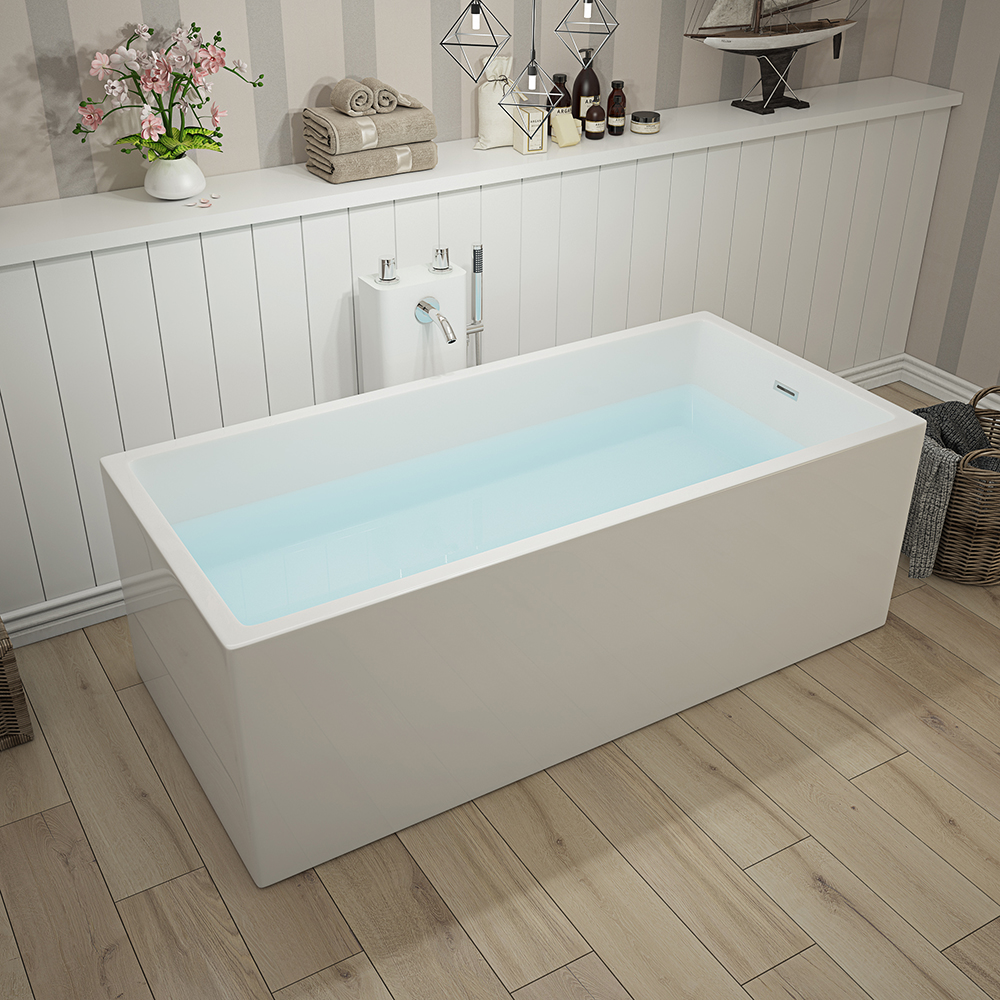Freestanding baths, depending on their construction materials, can offer varying degrees of heat retention. Heat retention is an important characteristic of bathtubs because it determines how long the bathwater will stay warm and comfortable. Here's how freestanding baths can influence heat retention:
Cast Iron Freestanding Baths: Cast iron tubs are known for their exceptional heat retention properties. They can efficiently retain the heat of the water for a long time, ensuring that your bath remains warm throughout your soak. This makes them an excellent choice for those who enjoy long, relaxing baths.
Stone Freestanding Baths: Stone bathtubs, such as those made from materials like marble or granite, also have good heat retention characteristics. Stone is a natural insulator, and it can help maintain water temperature for an extended period, contributing to a luxurious bathing experience.
Acrylic Freestanding Baths: Acrylic tubs are lightweight and less expensive than cast iron or stone, but they may not retain heat as effectively. While acrylic has some insulating properties, it may not keep the water as warm for as long as cast iron or stone tubs. However, many modern acrylic tubs have improved insulation layers to enhance heat retention.
Copper Freestanding Baths: Copper bathtubs have unique heat retention properties. They are known for quickly warming up to the water's temperature, providing a cozy and inviting bathing experience. However, copper also cools down relatively faster when compared to materials like cast iron or stone.
Fiberglass Freestanding Baths: Fiberglass tubs are lightweight and budget-friendly but are less effective at heat retention compared to cast iron, stone, or even acrylic. The material itself does not have strong insulating properties, which means the water may cool down more quickly.
To maximize heat retention in your freestanding bath, consider the following tips:
Preheat the Bathroom: Warm up the bathroom before taking a bath. This can help maintain the water's temperature by reducing heat loss to the colder bathroom environment.
Use a Bath Mat: Placing a bath mat or towel under the tub can provide some insulation and prevent direct contact between the tub and the cold floor.
Choose the Right Water Temperature: Using hotter water initially can compensate for any heat loss during your bath. Just be cautious not to scald yourself, and always mix hot water with cold water to achieve a comfortable temperature.
Consider a Bath Cover: Some freestanding baths offer covers that can help maintain water temperature while you soak. These covers can be especially useful in combination with a heat-retaining tub.
It's essential to choose a freestanding bath that aligns with your preferences for heat retention, keeping in mind that materials like cast iron and stone generally offer superior heat retention compared to acrylic or fiberglass. Additionally, the insulation provided by the tub's construction and the bathroom environment can impact heat retention, so consider these factors when selecting a freestanding bath for your home.

Rectangle Freestanding Soaking Bathtub RL-MF1239

 English
English Español
Español Français
Français_02-2.jpg?imageView2/2/w/320/h/320/format/jpg/q/75)
-2.jpg?imageView2/2/w/320/h/320/format/jpg/q/75)






.jpg?imageView2/2/w/320/h/320/format/jpg/q/75)

_sherry_01.jpg?imageView2/2/w/320/h/320/format/jpg/q/75)
_01.jpg?imageView2/2/w/320/h/320/format/jpg/q/75)


